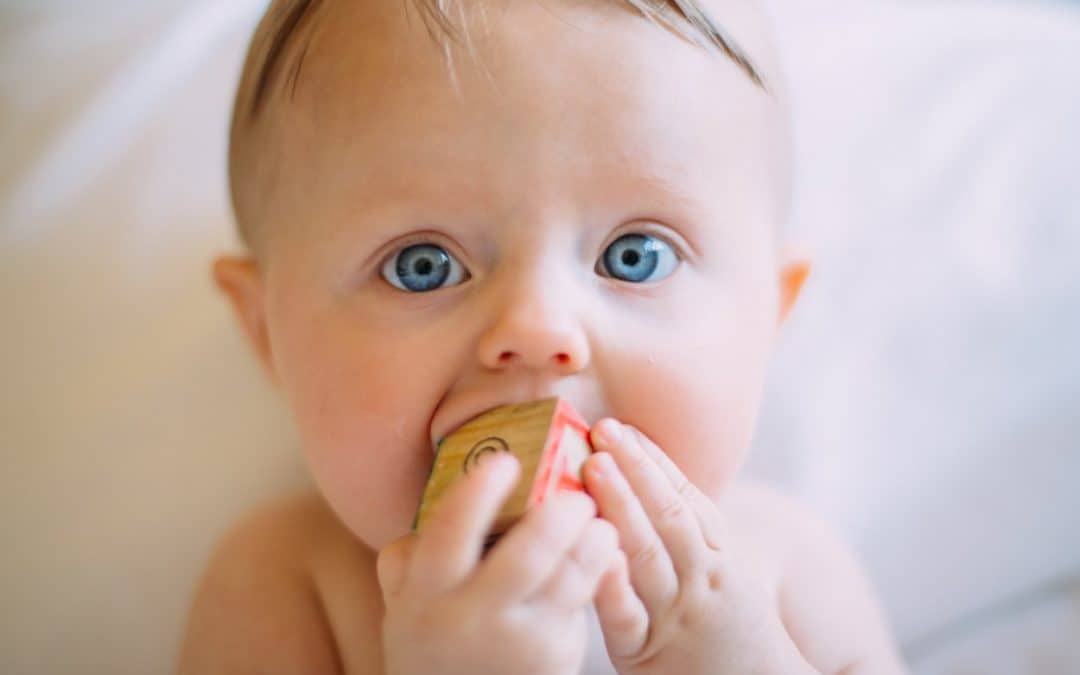Baby Mattresses
First of all, congratulations! You either are pregnant, or just welcomed into the world your newborn. You must be exhausted thinking of all the preparations you have to make, like developing a nursery, endless feeding, clothing, regimes, routines, other worries and fears.
You have enough to worry about, so here’s all you need to know about the mattress that your baby will spend the majority of his or her time on.
Why Baby Mattress?
For one, your baby is going to spend a lot of time in their beds. A LOT!
This might be hard to believe when you are waking up 3 times a night to feed the little one, but babies can sleep up to 16 hours a day until they are about 2 years old. Most of their growth and development takes place when they are asleep, making the environment in which they sleep in absolutely crucial to their well-being.
You will want to fit the mattress correctly in the crib you have without gaps that could pose discomfort or even danger. The mattress should be firm, as a soft mattress could conform to the shape of your baby’s head, causing difficulty breathing and increasing the risk of suffocation or SIDS (Sudden Infant Death Syndrome).
There are several types of mattress fillings to choose from: latex, foam, innersprings, or a hybrid. A good quality mattress of any filling material will keep its shape well and last well into your child outgrowing the crib.
Types Of Baby Mattresses
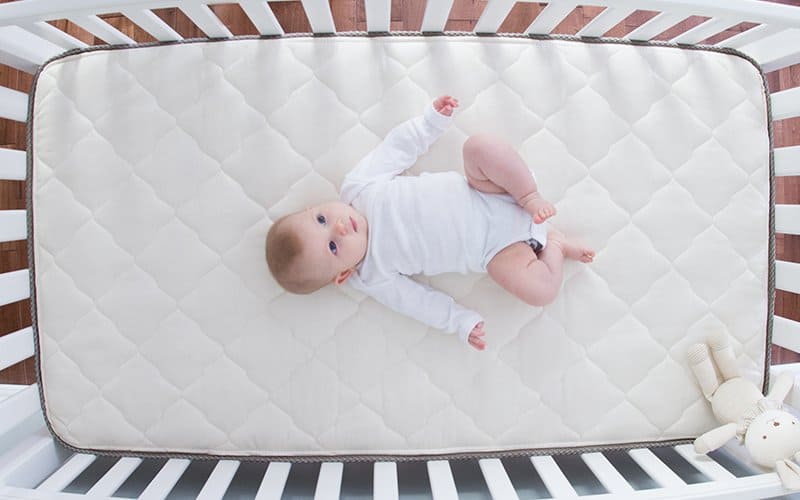
When picking a mattress, don’t sting on price or quality. A cheap foam or spring mattress has thin vinyl coverings and some edges that can tear, crack and dry out over time. With better quality, coverings then to be thicker, puncture-resistant and have reinforced laminates.
Foam mattresses often come with a PVC cover. These materials may contain petrochemical foams that continue to off-gas the chemicals over long periods of time, exposing your baby to health risks. If you’re going foam, get a top-quality organic foam mattress that has no harmful chemicals added in the manufacturing process.
Coil spring mattresses can also be a cheap alternative. However, these tend to stain easily and are hard to clean. The limited support that a coil mattress gives might also be more suited to an older child rather than a newborn. Innerspring mattresses can also amplify electromagnetic radiation, with many studies showing exposure to EMFs (Electric and Magnetic Fields) after use.
Natural latex mattresses are practically indestructible and are hypoallergenic, saving your child from potential health complications. Dust mites and mold love to live in mattresses and beddings, potentially causing respiratory problems and allergic reactions. Natural latex is naturally hypoallergenic and antimicrobial, making the surrounding environment safe for everyone.
Being breathable and cooler than conventional mattresses, they are the ideal choice for hot and humid countries. Latex is also naturally springy, negating the need for metal springs. The firmness of latex gives infants the support they need while they are less capable of keeping themselves aligned.
Be warned, the growing popularity of latex has led to some retailers including latex mattresses into their product offering and claiming “100% latex”, but this can include synthetic latex or a hybrid of natural and synthetic latex.
Synthetic latex is made from two petrochemicals, styrene and butadiene, harmful chemicals linked to effects on the central nervous system, headaches, weakness, skin and eye irritation and an increased risk of cancer.
Always look for 100% organic natural latex that is certified by a reputable organization such as GOLs or Oeko-tex standard 100.
What To Avoid?
Crib bedding, comforters, quilts, blankets can all lead to an increased risk of injury caused by smothering, entrapment and any blocks to the airway. To keep your baby warm, use infant sleep clothing and sleeping sacks instead of bedding. Any crib bed sheet should be well-fitted onto an appropriately-sized mattress.
The mattress should be firm and not soft enough for your baby’s head to sink into, potentially causing airflow blockages.
Mattresses have to meet the fire safety standards of every country before they are sold. Organic materials like latex, cotton and wool are naturally fire resistant, but more expensive to produce.
This leads to chemical flame retardants being added, containing harmful chemicals like antimony, boric acid and Halogenated Flame Retardants (HFRs). These chemicals can lead to a myriad of serious health problems like heart, eye and lung complications, delayed growth, thyroid problems and even cancer. Look for a mattress with no added chemical flame retardants!
Synthetic materials such as polyurethane and PVC are sometimes made with dangerous chemicals called Volatile Organic Compounds, or VOCs, that continue to off-gas for months. This can cause major health problems for the little one, so buy organic whenever you can. Check for organic certifications such as GOTS (Global Organic Textile Standard), GOLS (Global Organic Latex Standard), Greenguard, Certipur or any other reputable certifying organization.
Now that we’ve examined the do’s and don’ts, let’s have a look at the common questions most to-be parents or soon-to-be parents might have.
Can My Baby Sleep On A Foam Mattress?
Yes. But foam is not the most ideal mattress for a baby.
Soft foam mattresses are a danger as babies roll onto their tummies and can sink too much. The same body-contouring properties that have made memory foam products popular worldwide can pose a danger to infants.
It is of utmost importance to get a very firm mattress, and check for the mattress’ compliance with all national safety standards for children.
As mentioned above, foam mattresses typically contain polyurethane and PVC, both materials that commonly off-gas VOCs (Volatile Organic Compounds). Some of these VOCs can be carcinogenic.
Some common VOCs include benzene, acetaldehyde and formaldehyde, all known carcinogens that can link to cancer. VOCs can cause:
- Headaches
- Nausea and dizziness
- Nasal irritation
- Allergic reactions
- Neurological problems
- Liver and kidney damage
- Fertility problems and miscarriage
How To Choose A Baby Mattress
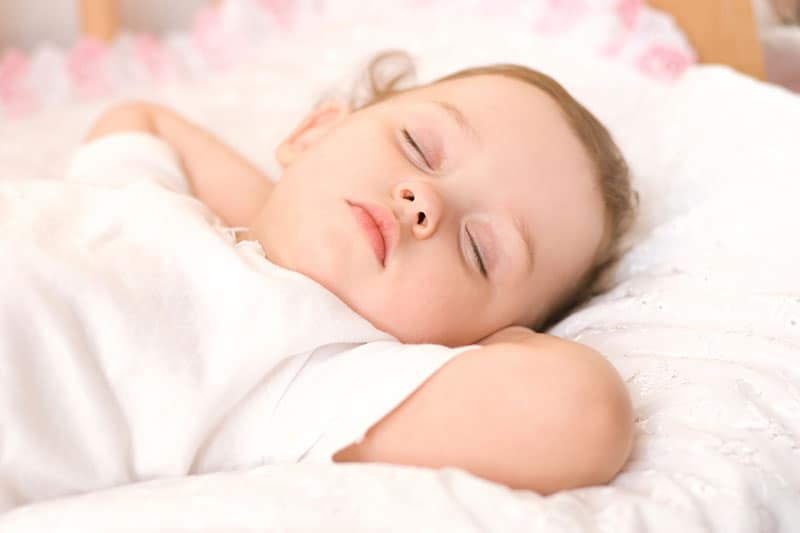
As above, first and most importantly, ensure that the mattress is extremely firm. Find the balance by applying pressure onto the mattress and making sure it bounces back into shape when you release.
Also ensure the mattress fits perfectly with the crib, leaving no more than a 20mm gap between the mattress and the sides so the little one doesn’t get wedged in between the gaps.
There are several mattress types available for babies, the more common ones being foam, spring and latex. Whichever you choose, go organic!
You don’t want to save on price and have your baby breathe in chemicals from synthetic materials. Not only should the mattress by organic, all covers should be made out of certified organic materials like wool or cotton.
A few certifications to look for are GOTS (Global Organic Textile Standards), Greenguard, Certipur and oeko-tex. This minimizes the use of synthetic material that can emit harmful chemicals that your baby will be exposed to.
What Is The Best Baby Crib Mattress To Buy?
Foam mattresses are often made with polyurethane and come with a PVC cover. Both polyurethane and PVC are petroleum-based compounds and continue to off-gas chemicals well into their use. Over a long period of time, continual exposure might result in poorer air quality that can cause health problems especially in babies.
Coil spring mattresses are cheaper, yet tend to stain easily and are hard to clean. The metal in the mattress can also amplify electromagnetic radiation, with many studies showing exposure to EMFs (Electric and Magnetic Fields) after use.
Natural latex mattresses are durable and will outlast your baby’s need for a crib.
Dust mites and mold love to live in mattresses and beddings, potentially causing respiratory problems and allergic reactions. Natural latex is naturally hypoallergenic and antimicrobial, making the surrounding environment safe for everyone.
Being breathable and cooler than conventional mattresses, they are the ideal choice for hot and humid countries. Latex is also naturally springy, negating the need for metal springs. The firmness of latex gives infants the support they need while they are less capable of keeping themselves aligned.
How Firm Should A Baby Mattress Be?
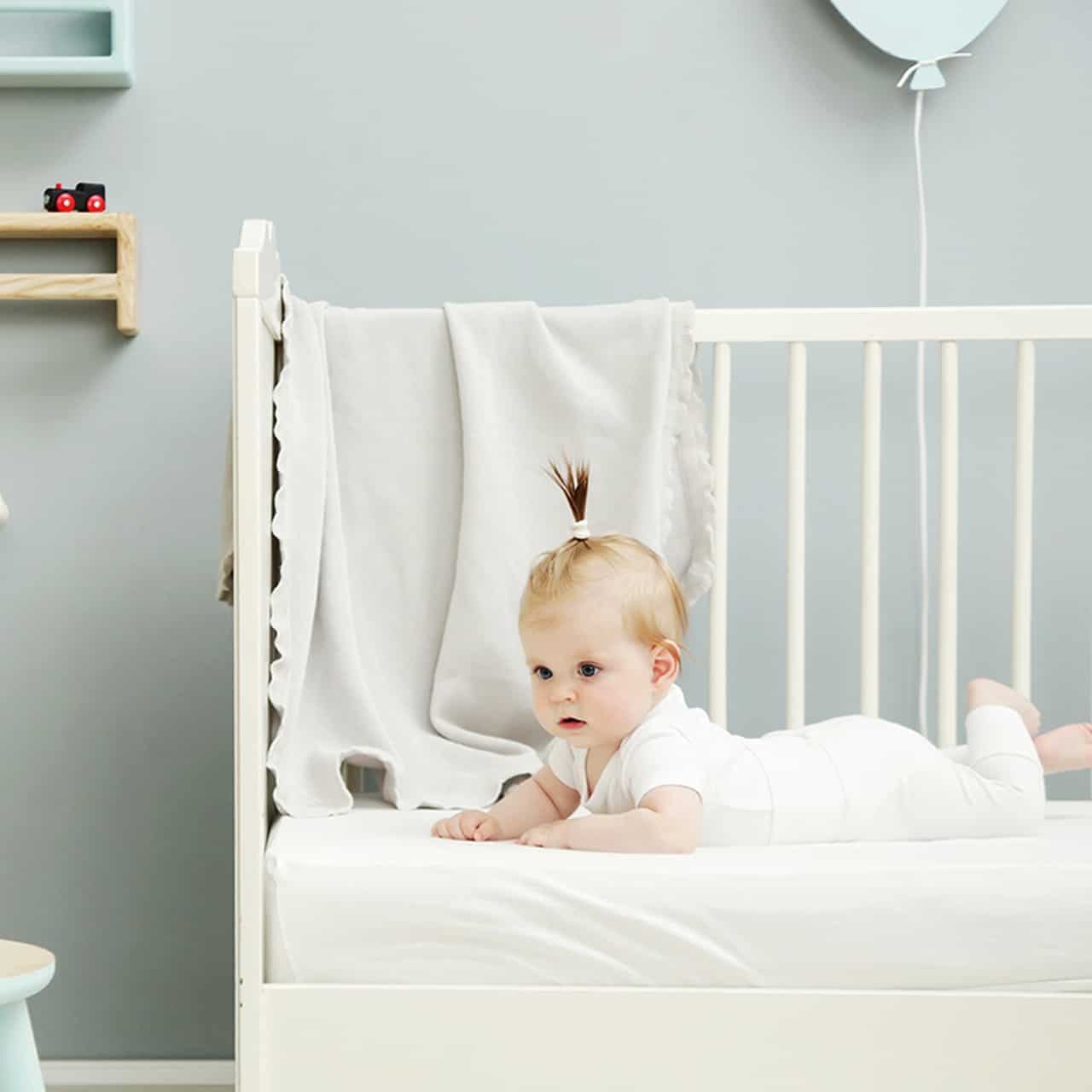
If it feels good to you, it is too soft!
Babies are growing rapidly, their spine and bones need much more support than adults. During the night, a baby’s spine can grow up to 1.5cm as the intervertebral discs in between their spinal vertebrae fill with water. During this process, the spine and neck must be firmly supported and held in a neutral sleeping position.
The mattress is more than the beds in which they sleep. It is also the primary environment where they will develop, where they will start to push up, turn and eventually stand. A firm, solid mattress will provide the resistance they need to develop and strengthen their muscles. Imagine yourself doing pushups on a waterbed!
A crib mattress cannot conform to the shape of your baby’s head as they lack motor control in their early stages of development and may sink into a too-soft mattress and suffocate, especially when lying on their sides and tummies.
A good test would be to apply pressure to the centre of the mattress and around the edges. The mattress should rebound and spring back readily into its original shape and should not conform to the shape of your hand.
Is It Safe To Tilt Baby Mattress?
Infant reflux happens multiple times a day. The ring of muscle between the esophagus and the stomach, called the lower esophageal sphincter (LES) is not yet fully mature, and this allows the stomach contents to flow back up through your baby’s mouth. This is very common and usually resolves itself after a few months. It rarely persists in babies beyond 18 months.
Reflux is more frequent at night, when babies are lying flat and the contents of their stomach, unfettered by gravity, slowly work its way up and out of their mouths. Having your baby regurgitate during the night is scary and worrying, leading to many people putting the baby to sleep on an incline using wedges, pillows, or other props.
The American Association of Pediatrics (AAP) have warned against letting infants sleep in inclined positions with their head higher than their feet, and calls for infants to sleep on their back, on a firm, flat surface without any bumpers, bedding or toys.
The danger is that babies have poor head control and lack the strength to hold their heads up. They can slouch their heads while sleeping at an incline, tuck their heads into their chests and this can close the airway.
Is Latex Mattress Good For A Baby?
Natural latex mattresses are the best choice for babies.
Non-Toxic – Latex comes from the sap of a rubber tree. Unlike synthetic fibers and plastics, latex has been used for centuries in the manufacture of rubber gloves, clothing, footwear, food-grade tubing and medical equipment, all designed to be in close contact with the human skin.
Natural latex avoids the harsh chemicals needed for the production and maintenance of memory foam mattresses.
Hypoallergenic – 3 out of 4 people who suffer from allergies report their allergies coming from their bedroom. Mattresses are the favourite home of microscopic organisms such as bacteria, fungi and dust mites. Mold, mildew and dust mites that can collect in the interior are one of the leading causes of allergic reactions in people.
Latex is naturally antimicrobial, repelling harmful organisms that can enter into your baby’s nasal passages and digestive system.
Breathable – Many children develop skin problems such as rashes due to the lack of ventilation of their mattress material and the large amounts of time they spend in their beds. A mattress with good ventilation permits airflow to keep the mattress cool and let babies sleep at the best sleeping temperature. This is even more important if you reside in a hot and humid country.
Natural latex mattresses have an open-cell structure that permits constant airflow. The core of a latex mattress has tiny holes or perforations that are added in the manufacturing process. This is to keep the heat flow through the latex consistent when baking. The constant airflow through the mattress ensures that perspiration and other types of moisture leave the bed and keeps the baby dry.
Firm and Comfortable – Soft baby mattresses can be dangerous, increasing risks of suffocation as babies learn to turn onto their tummies.
Latex is extremely springy yet firm under pressure. It will stay perfectly flat and will rebound almost immediately back to its shape after pressure is relieved.
Durable – Natural latex mattresses have an average lifespan of 12-20 years. Rubber is a strong, resilient material that naturally rebounds once weight is lifted and will retain its original shape over many years of use. You will be able to use the mattress long after your baby outgrows a crib, or use it for future children!
Why Should You Get A New Mattress For Each Baby
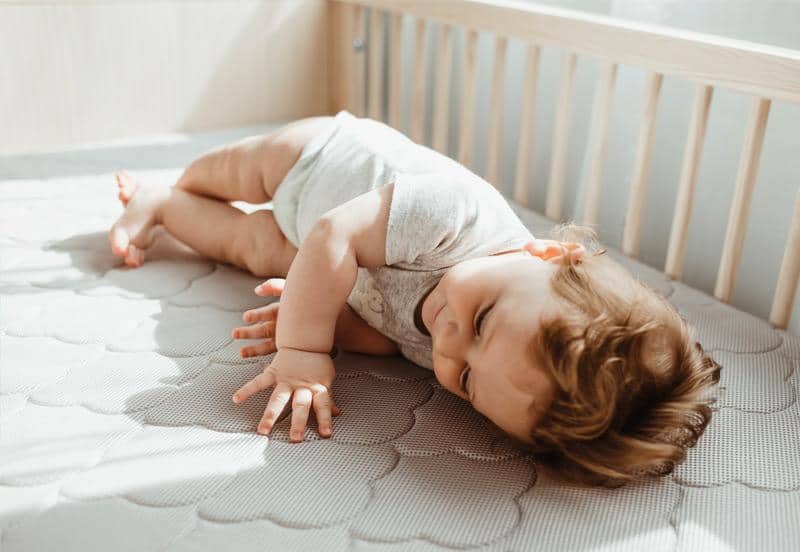
So you have a second child and now you are thinking of reusing the mattress. Reusing mattresses and giving younger children “hand me downs” is a pretty common practice between friends and family.
Generally, a better practice would be to use a new mattress for each baby, but because of price, sometimes this option is not always available. Older mattresses tend to have a build up of mold, mildew and can hide dust mites.
There is some research that found that using a second-hand mattress brought in from outside the family might slightly increase the chance of SIDS (Sudden Infant Death Syndrome), although the link is not yet proven.
To reduce this risk, yet still use a second hand mattress, make sure that the mattress you choose to use was completely protected by a waterproof cover during storage and is in good condition with no rips and tears.
Are Mattress Protectors Safe For Babies?
You’ll be expecting to spend a lot of time cleaning the mattress from accidents and leaks. Most waterproof protectors will be made from one of 3 plastics:
Vinyl/PVC – Avoid this completely. PVC, or polyvinyl chloride is a known carcinogen. The chemicals used to soften the PVC plastic and make it flexible to use are phthalates. Phthalates are extremely toxic and can cause reproductive harm, asthma, cancer, and damage the liver and kidneys. They do not bind well to the vinyl and continue to off-gas into the surrounding air.
PEVA/EVA – Polyethylene vinyl acetate and ethylene vinyl acetate are free of chlorine, but still contain chemicals best avoided.
Polyurethane – Polyurethane foam commonly off-gases VOCs (Volatile Organic Compounds). Some of these VOCs can be carcinogenic.
Some common VOCs include benzene, acetaldehyde and formaldehyde, all known carcinogens that can link to cancer.
Some pads made from organic materials such as wool or cotton is moisture resistant and dries quickly, but is not 100% waterproof. Several washable pads can be used with each other together with an organic protector like cotton can give extra layers of protection.
Some baby mattresses come already waterproofed yet are breathable to reduce suffocation risk. A high-quality mattress is layered with a top breathe-through material and has an interior waterproof lining with an additional layer of air to protect against the baby rolling on her or her tummy and suffocating.
Is Polyurethane Foam Mattress Safe For Babies?
Polyurethane is the main ingredient in memory foam. Polyurethane foam mattresses continually off-gas chemicals over long periods of time that can be harmful in high volumes. Depending on how it’s processed, polyurethane foam may contain various chemical additives, including formaldehyde, benzene, toluene, and other well-established toxic chemicals.
Most adults don’t notice any side effects of prolonged exposure to polyurethane foam which include headaches, dizziness, nausea, liver and kidney problems and neurological problems. However, babies have much smaller mass and might suffer adverse effects from using polyurethane.
A study done by the US Environmental Protection Agency found that an analysis of 20 new and old crib mattresses released significant amounts of VOCs (Volatile Organic Compounds) into the air. The air quality around the sleeping infant’s breathing zone had higher VOC levels than the air in the room. Sleeping babies also inhale higher air volume per body weight than adults since they sleep most of the day.
Mattresses need to meet each country’s fire safety standards before being sold. Polyurethane foam is also highly flammable, leading to most mattresses being treated with flame retardants. Flame retardants such as PBDEs (polybrominated diphenyl ethers) are commonly used on crib mattresses. These are known to interfere with thyroid function. PBDEs were banned in Europe and some US states after they were found to be accumulating in blood and breast milk.
Newer crib mattresses now contain other flame retardants such as chlorinated-TRIS. The use of this cancer-causing toxin is banned in the manufacture of children’s sleepwear but continues to be used in some crib mattresses.
To cut the long story shorts, avoid polyurethane foam at all costs when picking your baby’s mattress!
Where To Buy Baby Mattresses?
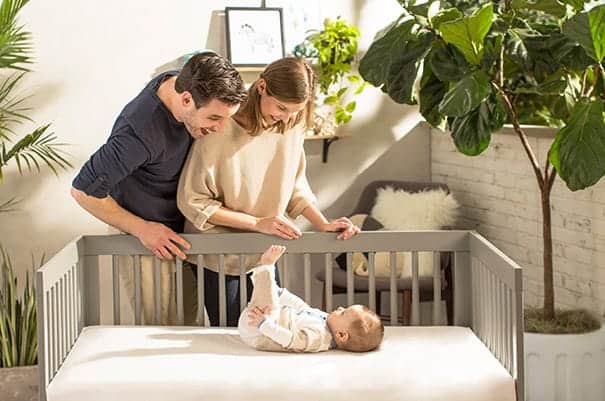
Most large retailers like Ikea, Macy’s and Walmart would carry a selection of baby mattresses, as would most parenthood stores. Some retailers have already stopped selling mattresses with toxic flame retardants and a quick check on their current selection would give more information.
A large selection is available online from retailers like Amazon, as well as smaller, more niche mattress companies. Look for one that is honest and upfront about the chemicals used in the manufacturing process and have proper certification like GOTS and Certipur to ensure minimal use of chemicals in their products.
How To Clean Baby Mattress Urine
At some point you are going to have to clean the accidental spills and leaks from the baby mattress.
The best prevention would be to use a combination of mattress pads and protectors, yet ensure the protectors are breathable with an additional layer of air to prevent suffocation, and do not contain any harmful chemicals.
Some higher-quality baby mattresses are already waterproof, coated with a breathable exterior layer to ensure continued airflow should your baby manage to turn over and lie on the belly. If so, cleaning is as simple as wiping the mattress down and potentially washing the covering. Good coverings are made of organic material such as wool or cotton, and can be machine washed under a delicate or cool cycle.
Yet after all that, some pee might manage to find itself on the mattress. When this happens, speed is paramount. The sooner you wash, the more success you’ll have in getting all the pee out.
1. Remove all the sheets, covers and any bedding and wash normally.
2. Prepare your cleaning supplies. You will need cold water, vinegar, baking soda, a little organic detergent, a cloth to blot away moisture, a spray bottle and a vacuum with a hose.
3. Using the cloth, blot any excess moisture to soak up as much as possible. Do not scrub the area and risk pushing the liquid deeper into the mattress.
4. Prepare a cleaning mix of 2 parts cold water, 1 part vinegar and a small amount of detergent in a spray bottle.
5. Spray the affected area, making sure to wet it adequately but not rub it around.
6. Let it sit for 15 minutes to allow the vinegar time to break down the stain and help with the odour.
7. Blot the excess moisture out again with towels or a cloth.
8. Sprinkle a generous amount of baking soda onto the wet area and let it sit for as long as possible so the baking soda can absorb the remaining moisture and lift any stains.
9. Dab away the baking soda
10. Use the vacuum cleaner with a hose attachment to remove any residue left over.
If you have gotten there too late and the stains have already set in, you will need a stronger cleaning solution.
1. Mix 250ml of hydrogen peroxide, 3 tablespoons of baking soda and a few drops of dish soap or liquid laundry detergent.
2. Spray the mixture generously onto any stains, allowing the mixture to soak in.
3. Wait for the mixture to dry. A baking soda residue layer should form in a few hours.
4. Vacuum the residue off and check to see if the stain remains.
5. Repeat as needed until the stains are gone.
How Long Does A Baby Mattress Last?
The lifespan of the mattress depends on what the filling material is, how it was used, whether it has waterproof protection and how it was cared for and maintained.
Memory foam mattresses last around 5 to 7 years, less if it is low density. Foam that has lower density loses its shape and support, developing lumps and bumps after a few years of use. Any indentations can be dangerous to an infant because it poses a suffocation or SIDS risk so be sure to check your foam mattress regularly to determine its integrity.
Innerspring coil mattresses last very slightly more than memory foam mattresses. A sign to replace the mattress would be to check for springs starting to poke through the exterior.
Latex mattresses last 12 to 20 years. 100% natural latex is a durable, resilient compound, which rebounds immediately after pressure is lifted. Latex has the unique ability to support pressure for many years without losing its structural strength and integrity.
The type of cover used matters as well. The material and construction of the covers protect the mattress and thin covers like vinyl will lose integrity over time. Look for tough organic fibres like cotton and wool.
Some ideas to keep the mattress in tip top shape include:
- Wash the cover periodically and when accidents occur with mild detergents (if removable)
- Ensure complete dryness at all times to prevent build up to mold and mildew
- Spot clean with a soapy sponge or cloth when you see any stains
- Flip it every 6 months to distribute the wear from the weight evenly
- Vacuum your mattress monthly with a hose attachment
- Clean up spills and accidents as soon as you discover them to prevent build up of stains and odours
- Inspect the mattress thoroughly every month to check for rips, tears, mites, and other undesirable conditions
If your baby has outgrown the crib and your mattress is still in good condition, it’s time to store the mattress.
- Clean it thoroughly prior to storage with baking soda and vinegar to remove any stains or odours.
- Dry it out and completely remove all moisture.
- Wrap in plastic or its original box in a dry, cool environment.
How Thick Should A Baby Mattress Be?
Not only does the baby mattress have to fit almost perfectly into the crib, it also has to be of appropriate thickness. The gap between the mattress and the edges of the crib have to be no more than 20mm, as any more could cause entrapment or suffocation. If you can squeeze more than two fingers in between the mattress and the edge of the crib, the mattress is too small.
The mattress should be no more than 15cm thick (6 inches) as any thicker and the infant could sink facedown and suffocate.
Are Latex Mattresses Safe For Babies?
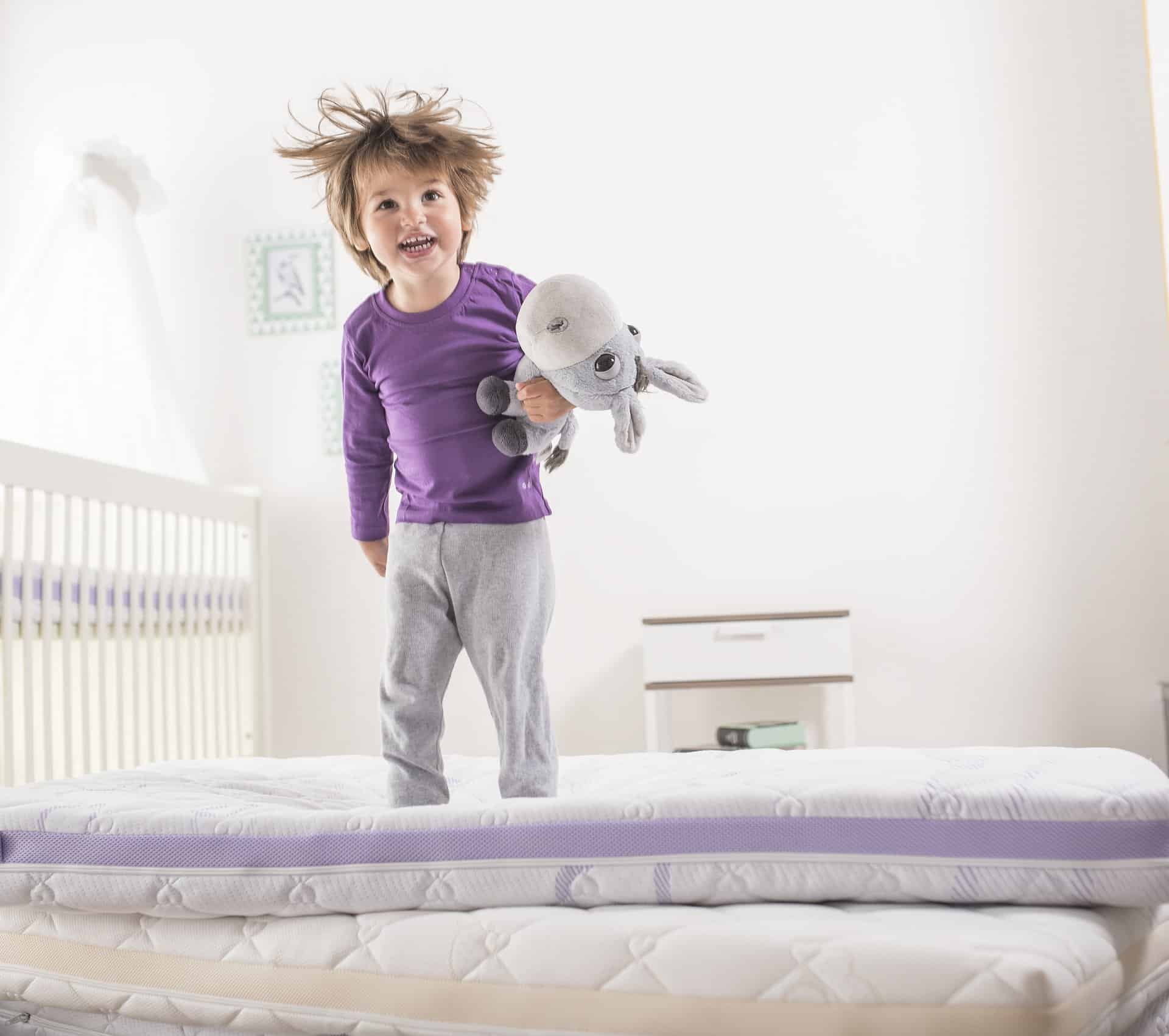
Yes! Latex has been used for hundreds of years for medical gloves, shoes, clothing, contraception, swim caps, chewing gum and many other commonly-used products that are designed to have close contact with the human skin.
Latex is collected from the sap of a rubber tree, or hevea brasiliensis. A rubber tree starts producing sap after 7 years and can produce around 9kg of latex a year. Each tree can continue to produce latex for up to 25 years, all while contributing to reducing our carbon footprint and delivering oxygen to the environment!
100% natural latex has no extra chemicals, harmful flame retardants, anti-dust mite or anti-mold inhibitors. Only shop for 100% natural latex that is certified by a reputable organization such as GOLS, Greenguard, Certipur, or oeko-tex.
As latex grows in popularity, manufacturers have started using synthetic latex because of its lower production cost. Mattresses are made with synthetic latex or blends of natural and synthetic latex. These mattresses are then marketed as “100% latex”, and can justify a higher price tag.
Synthetic latex is made from two petroleum-based compounds, styrene and butadiene, both toxic chemicals that can cause numerous health problems and contribute to cancer.
Less than 1% of Americans have an allergy to latex. Common early symptoms include swelling, redness and itchiness after contact with latex items such as balloons and gloves.
